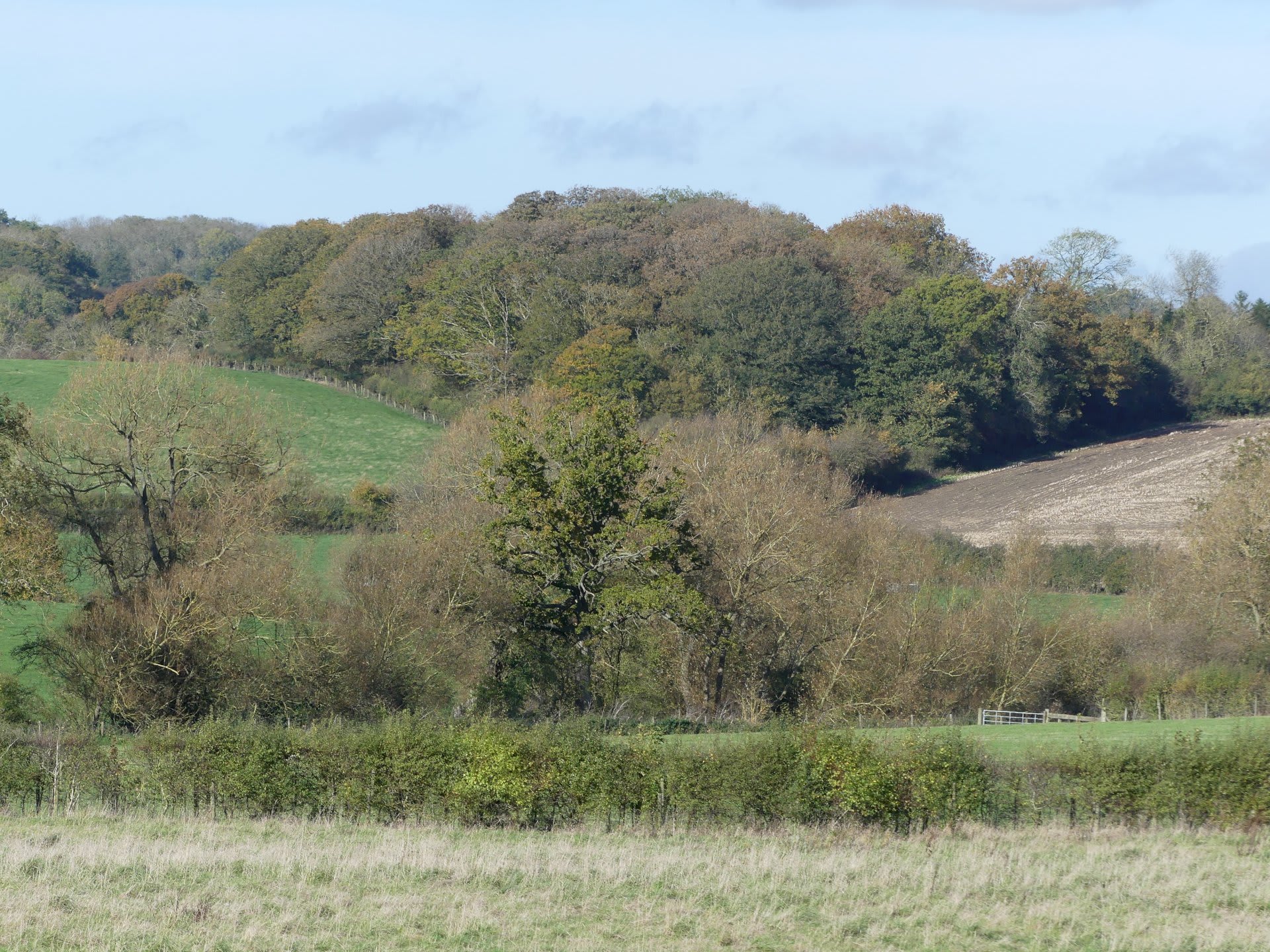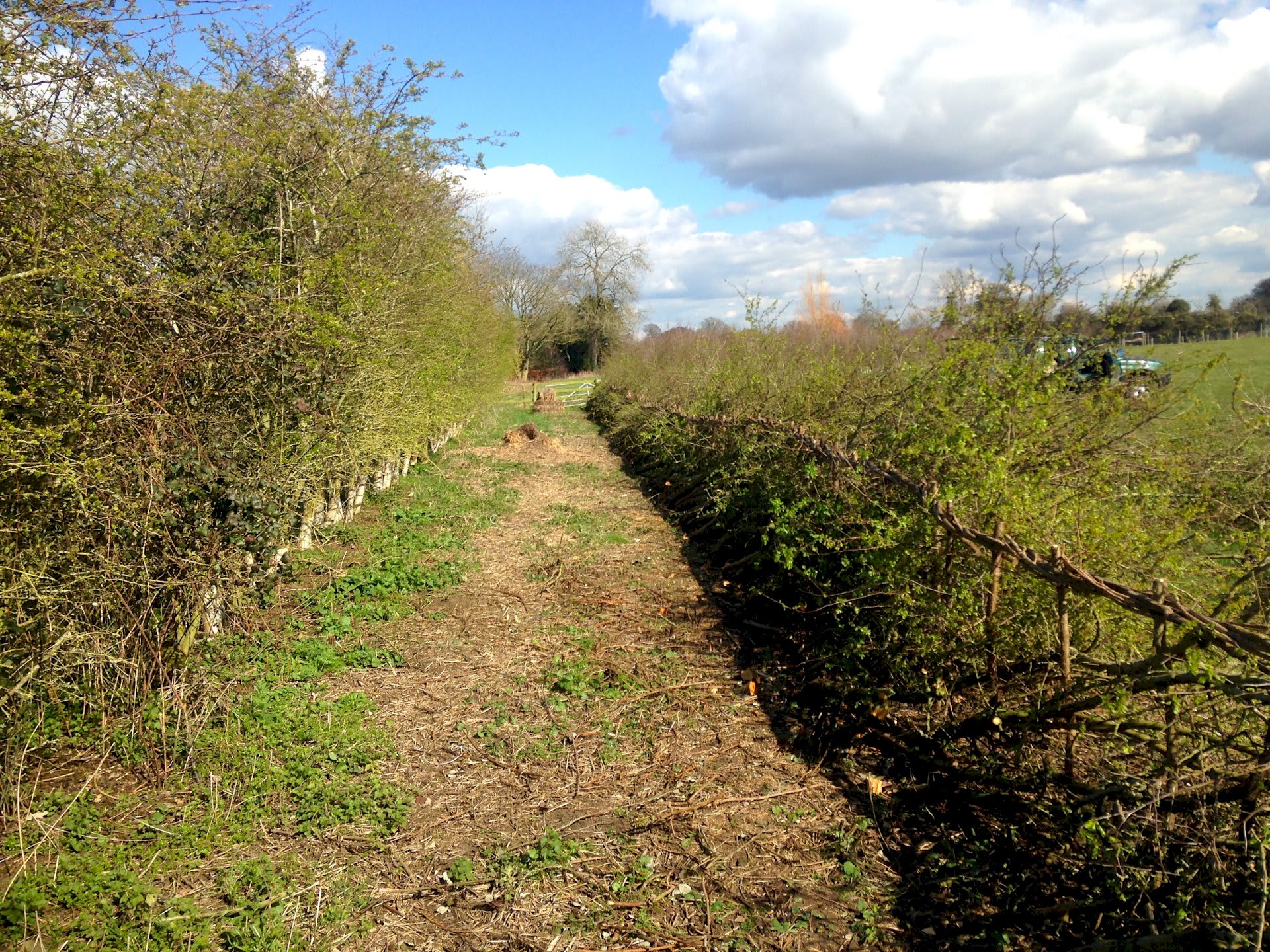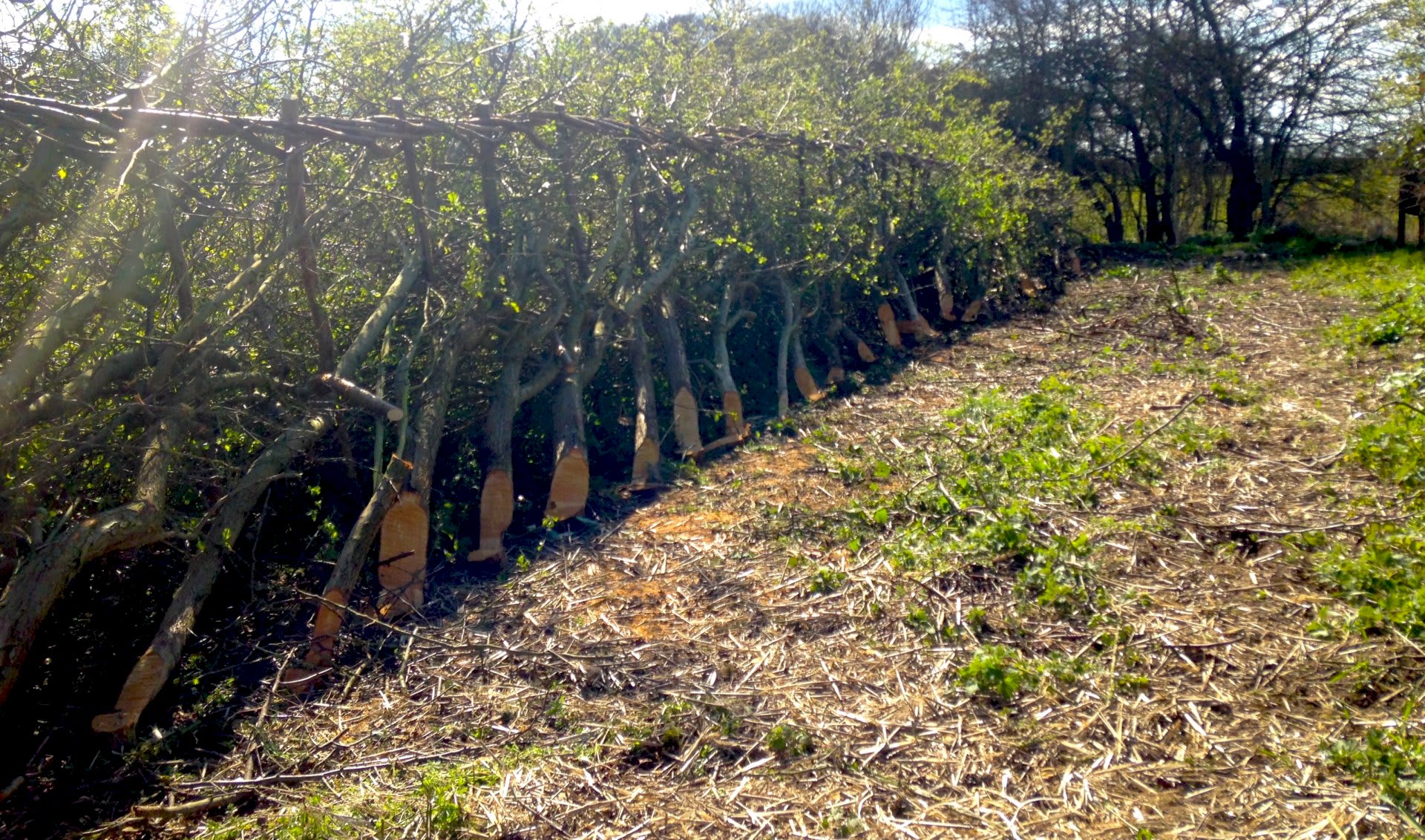Originally, hedgerows were generally planted to show ownership boundaries, provide shelter for livestock, and act as stock-proof barriers between fields.
Some have older origins, and may be the remnants of ancient woodland carved out for farmland. Many hedges are medieval in origin, and are often curved at the end for ploughing. In the last 300 years, many miles of hedgerow were planted on common land during the eighteenth and nineteenth centuries to prevent people who were using the land for communal open field farming and grazing; it is these more recent hedges that tend to be planted straight and dominated by hawthorn.
Hedges are basically strips of woodland edge habitat and come in many shapes and sizes. Hedges range from narrow strings of closely trimmed hawthorn sparse in wildlife, to thick bushes, tangled with dog rose, bramble and honeysuckle and interspersed with mature trees. Often hedges are the only link between otherwise isolated patches of wildlife habitat scattered across the landscape; thick, flora-rich hedges provide valuable nesting and foraging opportunities for a huge range of wildlife. The best hedges for wildlife are thick and broad at the bottom. They contain a range of woody species such as hawthorn, blackthorn, field maple, hazel and spindle; they also occasionally have large oaks and ashes within them. At the foot of the 'perfect' wildlife hedge there is thick vegetation, both grasses and flowers. Having a hedgerow rich in nectar, berries, nuts and leaves provide food and shelter for a wide assortment of wildlife. Hedges rich in these species help support up to 80% of our wood land birds, 50% of our mammals and 30% of our butterflies. The ditches and banks associated with hedgerows provide habitat for frogs, toads, newts and reptiles.
In areas with few woods, many species of birds depend on hedgerows for their survival.
How to plant and manage hedgerows for wildlife
New hedgerows are usually best planted where they complement or fill the gaps in any existing hedgerow network– help to recreate former historical hedgerow patterns, or join up other woody and scrub habitats. Hedges are best planted from early November to late March (avoiding heavy frosts). A great rule when planting is to choose species that already occur widely in local hedgerows. These are more likely to thrive in the local climate and soils, and to be in-keeping with the character of the landscape. Generally, the more woody species a hedgerow has, the more valuable it will be for wildlife, so it is usually best to plant a mix of different plants. I would always recommend using species which are typical for the local area; these will usually include hawthorn or blackthorn due to their stock-proofing qualities– hazel is also a great addition in our region. Other native shrub species can be used to make up the rest of the hedge, and these less numerous shrubs are best mixed randomly with the main two or three species and not planted in blocks.
Hedging for wildlife should, once planted, be given a good trim. A well-stocked hedge that has a great selection of diverse plants but is left to establish itself will slowly reach skyward, stretching up towards the sun. To avoid this, give it a good harsh trim back after planting. Up to a third of the height can be lopped off, or if the plant has a good show of buds lower down the stem, then anything up to half can be removed– be careful though, and check for buds first. This should be repeated the following year; this encourages the growth at a lower level and you will create not only a long-lasting, thick hedgerow but also the bushy vegetation at the base of the hedge we discussed earlier.
On established or older hedgerows, intermittent hedge-laying is used as a renovation and wildlife-friendly management technique. As hedges grow, they gradually become more tree-like; gaps appear lower down and the stems cease to provide an effective barrier. At this point, the hedge should be 3-5m high so that it can be laid effectively, both to fill in the gaps and to ensure the long-term viability of the hedge; hedge-laying promotes vigorous regrowth from the base, and involves partially cutting stems so that they will bend without breaking. The cuts are made at ground level and then the stems are laid out at an angle of between 45 degrees and horizontal. The cut stems are laid parallel to each other and tucked tightly together, protecting the new growth from livestock grazing. Vertical stakes and binders are advisable to strengthen and thicken the hedge, dependant on regional variations of laying techniques. The cut stems will eventually die off, but this wood should be retained within a hedge as it is a valuable habitat for a wide range of invertebrates and fungi.
Coppicing
If the hedge is in very poor condition, coppicing may be the best solution. The cut stimulates the production of new growth at the base of the hedge. Coppicing a hedge- cutting it off completely at just above ground level - works in a similar way to coppicing a woodland and will revitalize a hedge by increasing the density and productivity of the plants. It is a traditional rejuvenation technique in some parts of the UK. Coppicing is commonly used where the trees are too big for laying or when there are large gaps in the hedgerow. It is a particularly useful management technique if a hedgerow is ready for rejuvenation but has too few stems or they are too large or rotten. It is also useful for very wide hedgerows. If the regrowth is protected from grazing by deer and livestock, a thick dense hedgerow can be recreated in this way in just a few years. Coppicing also gives the opportunity to plant up any large gaps.
Hedgerows are the most widespread semi-natural habitat in the UK, and are critical to the existence of numerous plants and animals. They are particularly important within areas of intensive farming, and for the survival of declining species which are dependent on woodland edge, scrub or grassland habitats– hedgerows need work but can be by far the best investment for wildlife you could make on your land, helping join our patchwork of wildlife habitats across the countryside.
For more information on James Gillies Consultancy visit:
james-gillies.com or 100meadows.com













